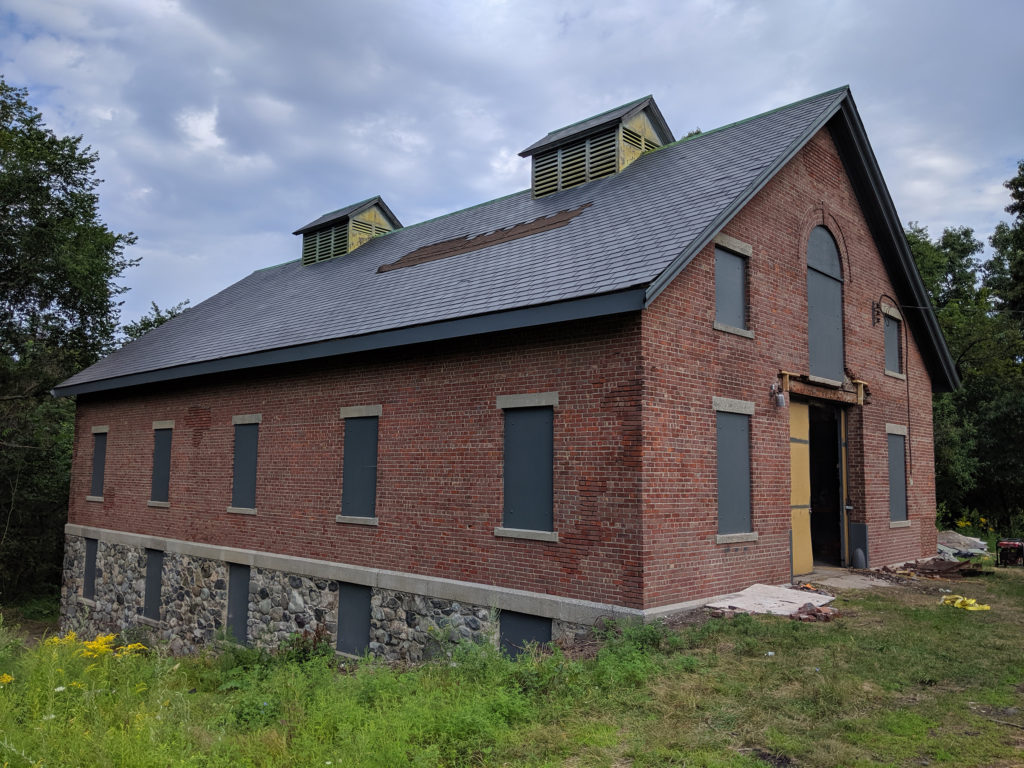
Changes in Store for Future Planning, Town Meeting Votes
By Elizabeth Harmer Dionne
The CPA up to now
In November 2010, 51% of Belmont voters adopted the Community Preservation Act (CPA), a state statute which allows communities to dedicate funds to acquiring and preserving open space and recreation land, historic resources, and affordable housing. Belmont property owners now pay a surcharge of 1.5% on the town’s annual real estate tax levy; residents who qualify as having low to moderate income according to state guidelines can apply through the Assessors Office for a full CPA surcharge exemption. Funds raised from this surcharge go into Belmont’s Community Preservation Fund. For fiscal years 2012 through 2019, Belmont collected $8,152,137 in CPA funds.
The state supplements the CPA funds that communities collect through the Massachusetts Community Preservation Trust Fund. The Trust Fund originally provided a 100% match for community CPA, but the state match has declined since 2006 as more communities have adopted the CPA. Belmont’s receipts from the Trust Fund have ranged from a high of $470,418 (52% match) in 2013 to a low of $189,960 (19% match) in 2018. For fiscal years 2012 through 2019, Belmont’s Community Preservation Fund received a total of $2,140,856 in Trust Fund and other state funds, as well as $140,453 in interest and other miscellaneous funds.
As required by the CPA, Belmont has established a Community Preservation Committee (CPC) to administer Belmont’s Community Preservation Fund. Belmont’s CPC has nine members. Six members are designated representatives, one each from the following municipal boards:
- Conservation Commission
- Historic District Commission
- Planning Board
- Board of Parks Commissioners (the three members of the Select Board)
- Recreation Commission
- Housing Authority
The Select Board appoints the three remaining CPC members.
The CPC meets monthly and reviews proposed projects to evaluate compliance with CPA requirements, to ensure that projects provide a clear public benefit and enjoy public support, and to provide feedback to project applicants on improving their projects, including both design and cost.
The CPA requires communities to spend or reserve at least 10% of annual revenues in each of the three mandatory spending areas, treating open space and recreational land as a single category. The CPC can recommend that Town Meeting appropriate the remaining revenue (70% of annual funds) as necessary in any of the three community asset categories. Funds may be returned if a project comes in under budget or if the project sponsors fail to initiate or complete a project, and those funds are no longer subject to the 10% allocation requirements. Project sponsors must typically complete their project within 30 months from the beginning of the fiscal year for which Town Meeting approves their appropriation.

The McLean Barn was cleaned and stabilized with Community Preservation Act funds. Photo courtesy of Spencer, Sullivan & Voigt.
Updates to the CPA: Concerns, Costs, and Capital Plans
During the CPA’s tenure in Belmont, there have been occasional disagreements over the best use of CPA funds, including the inherent value of various projects, as opposed to their cost; the public benefit provided by certain projects (especially those with private sponsors); and the degree to which the CPC should function as a gatekeeper for projects brought for consideration before Town Meeting. The CPC has learned a lot about what projects are most likely to reach a successful conclusion and ways in which to maximize the benefits of CPA funding. As a result, last year the CPC made important revisions to Belmont’s current CPA Plan. (The CPC updates the plan annually. The current version is posted on the town website at bit.ly/BelmontCPA.)
Containing Costs
Members of the town’s various advisory bodies and Town Meeting have expressed occasional concern over “project creep,” the expansion and increased expense of projects, and the ongoing impact of projects on the town’s operating budget, such as the maintenance associated with CPA-funded town parks or walking path projects. In response to these concerns, the revised CPC plan now contains the following statements and/or questions:
“CPA-funded design does not obligate the CPC to fund the construction of the subsequent proposed project.” (p. 20)
“What, if any, potential secondary effects will your proposed project have on the town’s operating budget?” (p. 22)
“The CPC, in its sole discretion, may provide guidance to applicants regarding the maximum amount it anticipates may be available or appropriate for ultimate construction of the proposed project.” (p.23)
Public Benefit
Another area of occasional concern has been the extent to which private projects funded by Belmont’s CPA actually benefit the public. Belmont’s CPA Plan “encourages Belmont residents to spearhead their own community-based projects that uphold the integrity of our community” (p. 7.) At the same time, application materials ask sponsors to justify their project’s public benefit.
Among the most significant changes made to Belmont’s current CPA Plan is a new requirement that private-project sponsors contribute funds equal to 10% of the amount of CPA funds provided by Belmont.
Among the most significant changes made to Belmont’s current CPA Plan is a new requirement that private-project sponsors contribute funds equal to 10% of the amount of CPA funds provided by Belmont. The revised plan also states that projects on publicly owned land or sponsored by town departments will not be expected to contribute any private funds. This policy reverses the prior expectation that project sponsors would raise 10% of the funds required to renovate public parks.
Gatekeeping
The CPA’s annual budget is not large. However, given Belmont’s fiscal constraints and limited capital budget, CPA expenditures have a significant impact in their allowed areas: open space/recreational land, historic resources, and affordable housing. Current needs in these areas far outstrip town funding. As a result, the CPC has experienced pressure to limit or prioritize projects that it recommends to Town Meeting. The CPC has declined to do so for two reasons. First, it lacks clear and comprehensive information about Belmont’s overall capital needs. Second, the CPC feels that Town Meeting is the appropriate body to prioritize projects that the CPA funds.
That said, the CPC can respond to gatekeeping concerns in the following ways. First, it may qualify its recommendation of projects to Town Meeting. Even if a project meets objective CPA criteria, and the CPC forwards it to Town Meeting, the CPC may provide a qualified recommendation based on the project’s perceived merits. Second, the CPC will carefully explain its process to Town Meeting, so that members of Town Meeting may feel empowered to refuse to appropriate funds for particular projects.
Prioritizing CPA projects will become increasingly important as Belmont gains a greater understanding of future capital needs and the role of CPA funds in meeting those needs. Two important examples include design funds for Phase II of the community path (up to $2 million) and the possible redevelopment of the town’s entire affordable housing stock (up to $1 million provided by the town in order to access federal, state, and other construction grants). The CPC has not previously had a policy of reserving CPA funds for upcoming needs, but Town Meeting may decide to do so as Belmont’s newly formed Long-Term Capital Planning Committee identifies significant projects that qualify for CPA funding.
Elizabeth Harmer Dionne is the chair of Belmont’s Community Preservation Committee. The opinions expressed in this article are her own and do not necessarily reflect the views of the CPC.


Sorry, the comment form is closed at this time.